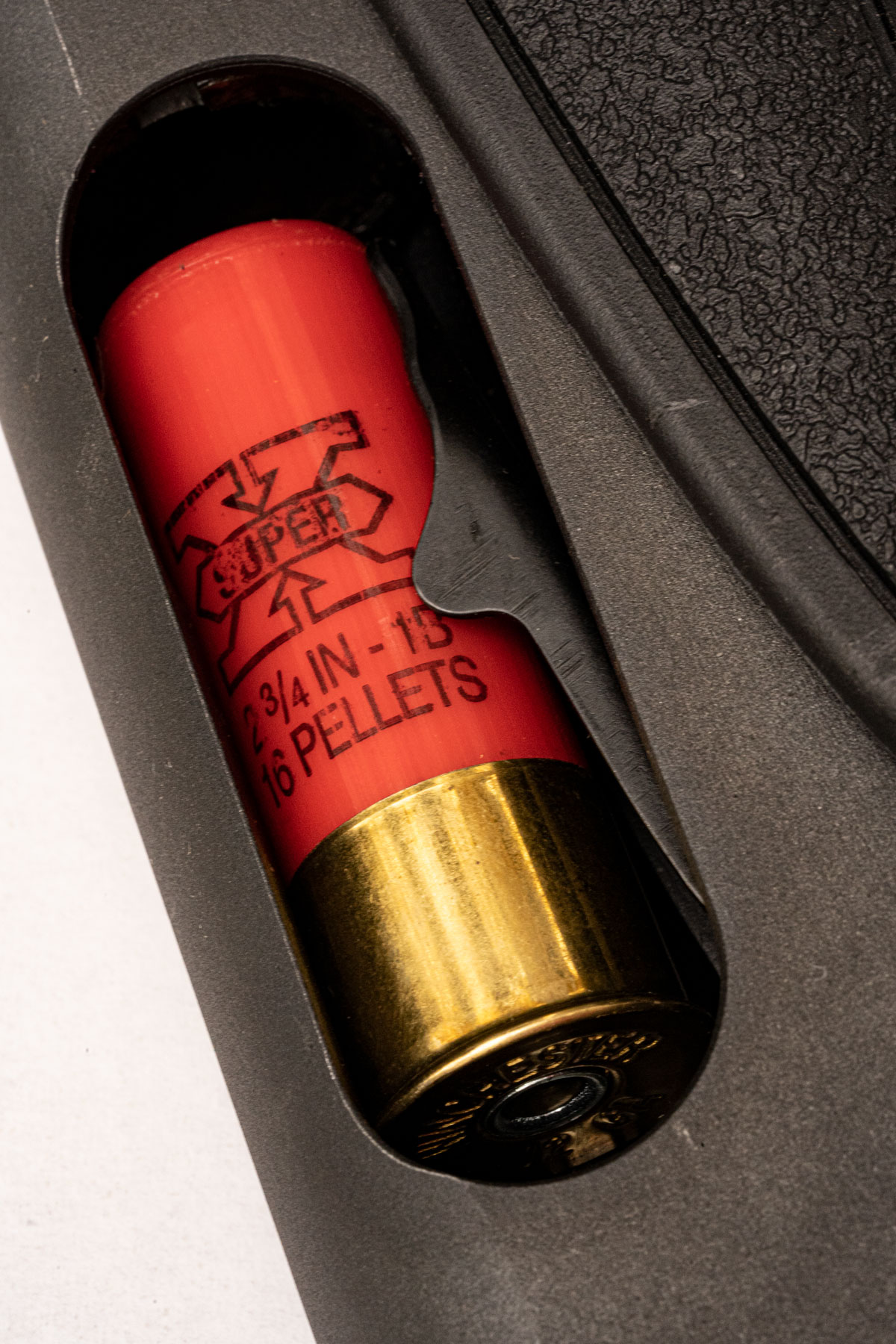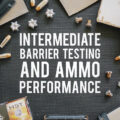A 12 gauge is a powerful weapon. It has long been used in the woods and over water to put meat on the family table. It has also been a popular tool for home defense, hanging over the mantle of many a pioneer cabin. But in order to do any of it, you need to […]
A 12 gauge is a powerful weapon. It has long been used in the woods and over water to put meat on the family table. It has also been a popular tool for home defense, hanging over the mantle of many a pioneer cabin. But in order to do any of it, you need to know how to reload a shotgun properly.
In the realm of home defense, the shotgun remains a viable option. Just the sound of a racking shotgun is usually enough to make would-be criminals seriously rethink their lives.

We’re going to walk you through how to effectively reload a shotgun for home defense. While this article is definitely geared toward the brand-new shotgunner, seasoned shooters in the audience might pick up a trick or two as well.
The Need to Reload
Despite the average shotgun’s relatively low ammo capacity, it isn’t likely that you’ll need tons of ammo to effectively eliminate a violent threat. As we mentioned, shotguns are highly effective weapons. The mere sound of that iconic pump action sends shivers of dread through anyone on its receiving end.
However, I’m a firm believer in the old adage, “Luck favors the prepared.” And since it’s technically possible that you’ll need to reload your 12 gauge to protect your family, you might as well be prepared for that scenario.
If you do find yourself needing to reload your home defense shotgun, you’ve definitely landed in a pretty desperate situation. For this reason, we’ve chosen the simplest, most foolproof reloading method we could think of.
Are there faster techniques? Absolutely. Just check out the competition circuit and you’ll see some shotgunners reload faster than you can blink.
However, the average shotgunner isn’t a high-level competitor. While speed is definitely an asset when it comes to reloading in a home defense situation, the ease and reliability of the method is just as important. Maybe even more so.
Reloading Under Fire
As far as firearms go, the standard shotgun is not particularly complicated, especially when you’re dealing with the simple pump action variety. Reloading them isn’t particularly complicated either…at least not when you’re shooting single targets and have plenty of time for a leisurely reload.
However, in a home defense situation, when you’re under duress (and possibly under fire), that simple process can become super complicated in a hurry, especially if you haven’t spent much time practicing.
There are literally dozens of reloading techniques. Techniques used by competitive shotgunners are incredibly impressive. Of course, these guys have reloaded their weapons thousands of times. They could do it blindfolded in their sleep and never break a sweat.
In a self-defense scenario, your body will experience a massive adrenaline dump. That adrenaline surge is the body’s natural response to stress, and is intended to power you through “Fight or Flight.”
The effects of adrenaline are not all positive. Individuals respond differently to an adrenaline surge. However, common reactions include a decreased ability to think clearly and difficulty focusing on specific objects. Adrenaline also causes a rapid increase in heart rate which can cause a loss of fine motor skills and a bad case of “the shakes.”
If you’re shaking, can’t think straight, and have a hard time focusing on objects, you’re going to have a very difficult time pushing a 2 ¾-inch shotshell into a similarly sized loading port.
Obviously you need the ability to quickly reload your home defense shotgun. However, the technique we’re about to share isn’t the fastest. Instead, it is simple, reliable, and requires minimal conscious thought and manual dexterity.
Where to Keep Your Extra Ammo
Before we get into the specifics of reloading, let’s talk about access to ammo for that reload.
In a home defense situation, you won’t have time to strap on a vest or sling on a bandolier. You also don’t want to fumble through a nightstand or gun safe to locate extra rounds. The best place to store your extra home defense ammo is right on your shotgun.

The two most common options are a side-saddle on the receiver or some sort of stock mounted shell carrier. If you don’t want to use one of these accessories, be prepared to stuff some extra 12 gauge shells into the pockets of your pajama pants before you go investigate what just went bump in the night.
If you are new to the concept of using a shotgun for home defense, there’s nothing wrong with trying some different carrying methods. Some shooters find receiver mounted side saddles hard to use. Others outright hate a stock mounted carrier. There really is no one-size-fits all option.
You’ll want the ammo in your shell carrier to be positioned with the brass pointing down. This may seem counter intuitive, since having the brass pointing up would seem to prevent your ammo from dropping out of the loops. However, if you have a quality shell carrier, you shouldn’t need to worry about your shotshells falling out. Plus, this orientation makes it super easy to reload without having to reorient your shells.
Easy Shotgun Reloading Technique
We’re going to focus on reloading a standard pump shotgun since these tend to be the most popular. However, this technique can easily be adapted for most semi-auto models as well.
I’ll admit I am in total awe of the reloading prowess of some competition shooters. Some of those guys (and gals) can reload an entire magazine in under three seconds. It’s truly a thing of beauty. Many of them can reload without ever moving the shotgun from their shoulder.
I am not that person. While I’m strong enough to swing a 12-gauge with all the authority my small frame can muster, I’m far from a brute. My wrists are pretty weak and supporting the full weight of my 870 is difficult, even when I don’t have a cocktail of adrenaline coursing through my bloodstream.
Instead of struggling with wobbly wrists while trying to reload, I drop the shotgun from my shoulder. Then, I tuck the buttstock under my armpit while supporting the weight of the weapon with my support hand.
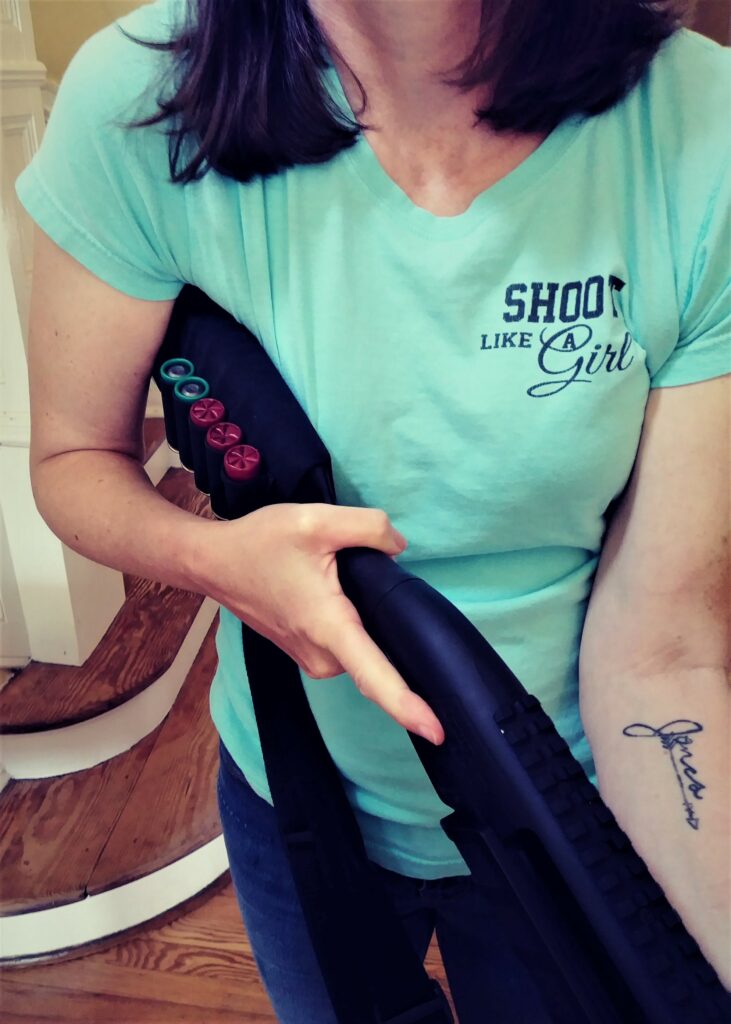
Before you start making fun of me for my girly wrists, this actually has several self-defense advantages. These are some pretty serious advantages, even for shooters with plenty of upper body strength.
First, this position gives you the advantage of reloading with your dominant hand (which is probably far more coordinated than your support hand).
In this position, you do lose the ability to keep the muzzle on a potential threat. However, it gives you the advantage of some extra strength and leverage should someone attempt to disarm you while you’re reloading.
The last thing you want is for a criminal to take your shotgun and use it against you. Tucking the buttstock under your armpit makes it easier to hold onto that weapon in a struggle. And weapon retention is crucial in a self-defense situation.
When you need a shell, use the thumb of your dominant hand to push the shotshell out of the loop of your carrier, letting it drop into your hand. Cup your hand so it forms a sort of cage the shell can drop inside. You don’t want to have to chase a rolling shotshell across the living room floor.
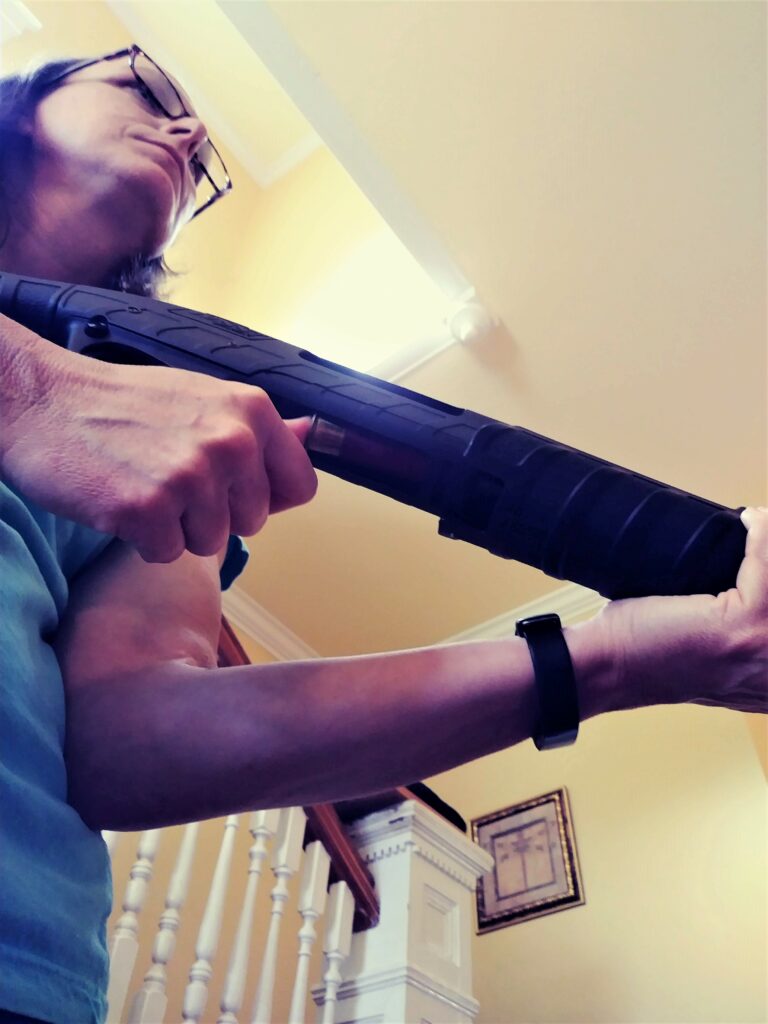
Make sure you’re holding the shell parallel to the receiver. Slide the shell into the loading port and then push it into the tube with your thumb. You should feel it click into place when it is far enough into the magazine that the tube spring won’t try to spit it back out into your hand. You may need to push your thumb up into the magazine tube to get the shell to stay put.
Rinse and repeat until the magazine is full.
Loading the Chamber
It’s easy to tell when you’ve emptied the magazine, because you’ll get a heart wrenching click instead of the expected bang when you pull the trigger.
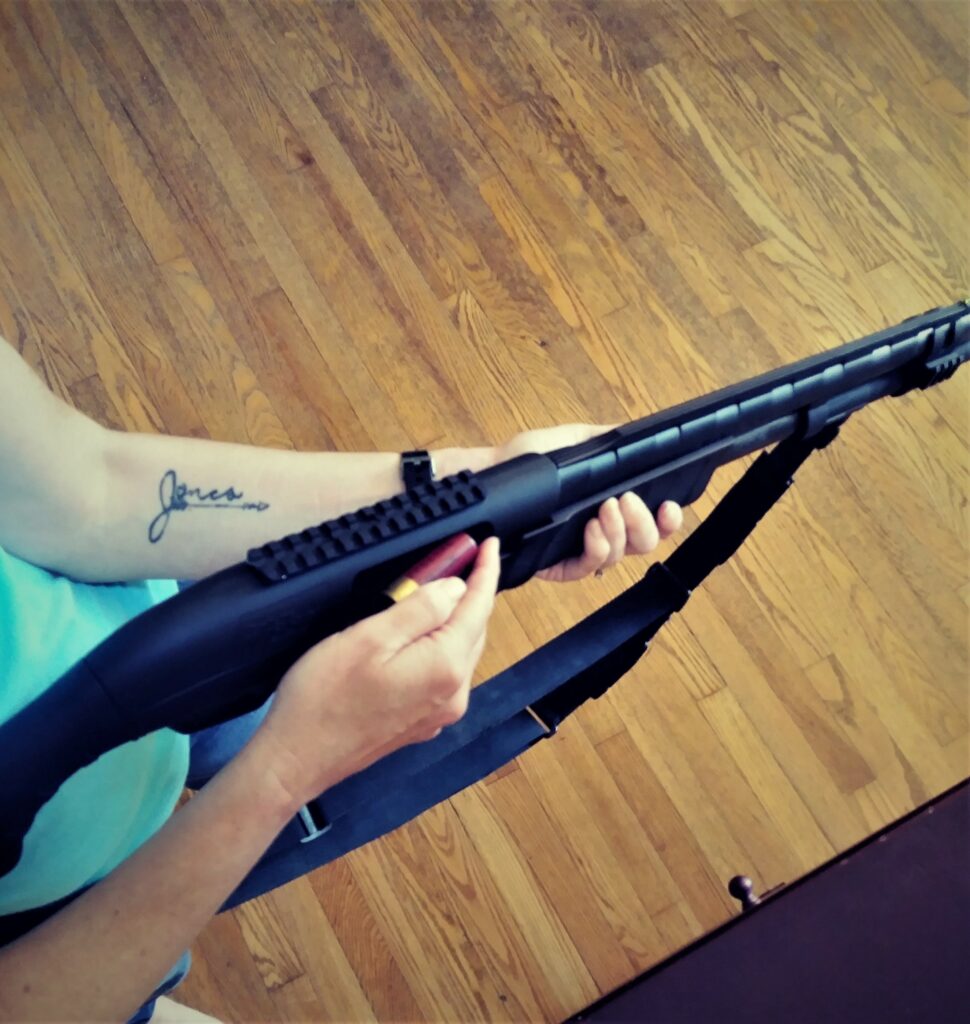
If you’ve completely emptied your shotgun, you’ll also need to reload the chamber. You’ll need to do this BEFORE you reload the magazine.
Open the action, and tuck the buttstock under your armpit. Grab a shell from your carrier and slide it up the receiver until it drops into the ejection port. Then close the action. Once the chamber is loaded, you can raise the stock back to your shoulder to re-engage the threat or commence reloading the magazine.
When to Reload
Bird hunters know the importance of having a full magazine. More than one hunter has felt the heartbreak of emptying a weapon just as a team starts working the decoys. It is common practice for hunting shotgunners to fire two rounds, and then immediately reload two rounds. If they fire three rounds, they reload three.
We want our reloading to be proactive, just like the prepared duck hunter. We don’t want to wait until our home defense gun is empty to think about managing our ammunition.
To put it simply: Reload as you go. If you aren’t shooting, you should probably be reloading.
Final Thoughts
This reloading technique definitely isn’t the fastest reloading method. However, it is simple and easy to master. It also gives you some extra leverage that could help you hang onto your weapon if a gunfight suddenly turns into hand-to-hand combat.
Just like you should practice shooting your home defense shotgun, you should also practice reloading it. Do not underestimate the power of muscle memory. In a stressful, life-or-death situation, it may be the most valuable tool in your shooting tool kit.
If you can’t make it to the range, you can use dummy rounds to help build your reloading skills. Dummy rounds are designed to mirror the size, weight, and shape of live buckshot, so you can safely train at home without endangering the neighbors.
Need some suggestions for what to feed your home defense shotgun? Check out our article on The Best Shotgun Ammo for Home Defense.
